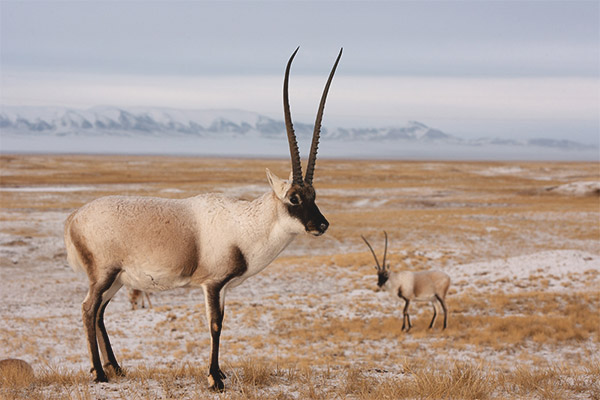The content of the article
By orongo is meant the Tibetan antelope, which is otherwise called chira. This representative is ranked in the family of bovids and subfamily goat. Distribution affects mainly Pakistan, Nepal, India, Afghanistan and nearby territories. Some representatives of the species are found quite high - in the range of 4.6 thousand from sea level. Remarkably, today there are about 75 thousand of these individuals. The population is exterminated by poachers, because animal wool is valued.
Habitat and description
- The spread is quite extensive, ranging from the Himalayas. Individuals are found in Nepal, China, India. They can successfully exist at an altitude of more than 4.5 thousand meters and at the same time feel comfortable. There are many family members in Xinjiang and Qinghai. There are individuals in the Tibetan region.
- As for the distinctive characteristics, by their overall characteristics the individual grows up to 1.2 m.length with height on withers within 1 m.
- These are bovid animals, medium-sized, with a mass of about 30 kg. Animals of male sex more than females. Horns are exclusively from males, they rise above the head directly or bend back. Due to the presence of the furrow horns seem ribbed, uneven.
- As for the coat, it is smoothed and compacted. By shade individuals quite diverse. They can be light, gray or brown-red. In the abdominal region whitish marks are observed. In the zone of the forelimbs, black stripes extend throughout the entire length. Tail average in length.
- On the face there is black and white pigmentation. Ears large in size, sharp ends. The presented animals lack a pronounced bright trunk, unlike their relatives, the saiga. Animals are endowed with a special swelling in the base of the nose, the bulge itself is like a ball. It increases or decreases.
Lifestyle
- Presented animals like to live in the steppe zones, which are practically devoid of vegetation.They can live in a harsh climate, without feeling much discomfort. Almost always live in packs of 25 individuals on average.
- The basis of the diet of individuals includes food of plant origin, namely young shoots and herbs. It is worth noting that such animals are excellent runners. If they notice danger, they can reach a speed of more than 50 km / h.
- As for the mating season, in such individuals it often begins in the late fall or early winter. It is noteworthy that at this time the males form a kind of harems. Individuals of the stronger sex are trying to protect their chosen ones with all their might. Therefore, serious clashes can often be observed between males.
- And fights often occur quite serious. Animals in this case come out strongly crippled. Serious injuries are often inflicted by long horns. After the males decide all the issues among themselves, they start mating.
- The duration of pregnancy in females lasts about six months. In most cases, 1 or a maximum of 2 cubs can be born. All year, the offspring develops and remains to live with their mother.It often happens that in the first six months half of the young are killed. Up to 1 year old, only 35% of cubs live.
- The problem with a high mortality rate lies in difficult climatic conditions. That is why young orongo often die. As soon as the young females reach puberty, they try to stay with the main herd. Males, in turn, form their groups. In the wild, such animals do not live longer than 9 years.
Interesting fact
It is noteworthy that individuals belong to the category of animals about which little is known. People practically did not learn orongo. Animals live in remote places in highlands at high altitude. For the first time such specimens were noticed by a Russian explorer when he went on an expedition to the Himalayas.
Status
- The problem is that animals have isolated habitat. Because of this feature, the number of individuals is low. There are no more than 75 thousand heads. It is these numbers that caused the inclusion of animals in the Red Book.
- The problem is that the number of individuals is gradually reduced.Because of this, the animals are on the verge of extinction. In addition, locals kill orongo because of the value of their skins.
In the past century, individuals were massively hunted. Because of this, their numbers declined sharply. Currently, animals are protected. They are considered an endangered species.











To send